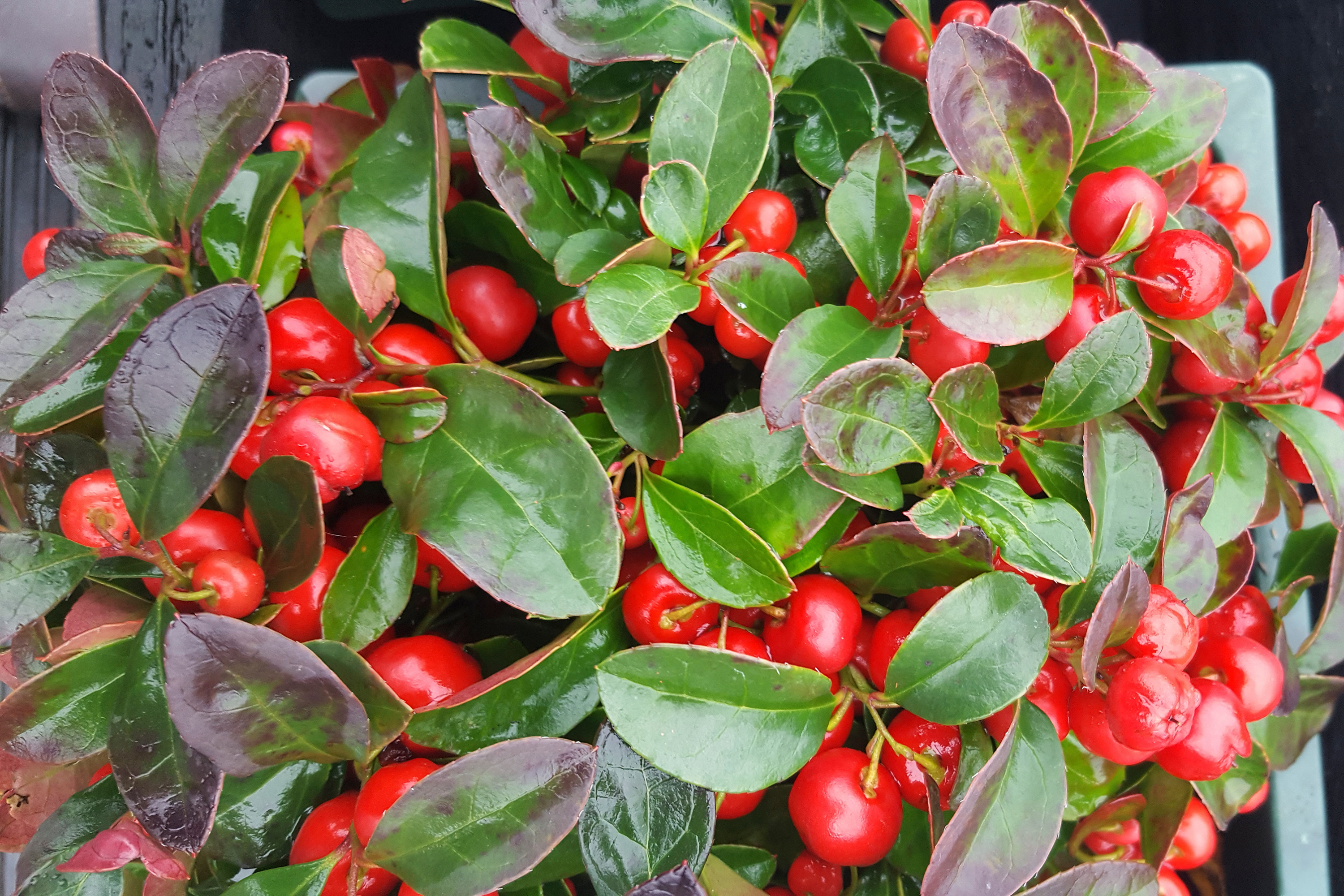Eastern teaberry
(Gaultheria procumbens)

Description
Gaultheria procumbens, also called the eastern teaberry, the checkerberry, the boxberry, or the American wintergreen, is a species of Gaultheria native to northeastern North America from Newfoundland west to southeastern Manitoba, and south to Alabama. It is a member of the Ericaceae (heath family). G. procumbens is a small, low-growing shrub, typically reaching 10–15 cm (4–6 in) tall. The leaves are evergreen, elliptic to ovate, 2–5 cm (3⁄4–2 in) long and 1–2 cm (1⁄2–3⁄4 in) broad, with a distinct oil of wintergreen scent. The flowers are pendulous, with a white, sometimes pink-tinged, bell-shaped corolla with five teeth at the tip 8–10 mm (0.31–0.39 in) long, and above it a white calyx. They are borne in leaf axils, usually one to three per stem. The anthers are forked somewhat like a snake's tongue, with two awns at the tip. The fruit is red and 6–9 mm (0.24–0.35 in) across. It is an epigynous berry, with the majority of the flesh of the fruit being composed of the fleshy calyx. The plant is a calcifuge, favoring acidic soil, in pine or hardwood forests, although it generally produces fruit only in sunnier areas. It often grows as part of the heath complex in an oak–heath forest. G. procumbens spreads by means of long rhizomes, which are within the top 2–3 cm (3⁄4–1+1⁄4 in) of soil. Because of the shallow nature of the rhizomes, it does not survive most forest fires, but a brief or mild fire may leave rhizomes intact, from which the plant can regrow even if the above-ground shrub was consumed.
Taxonomic tree:







